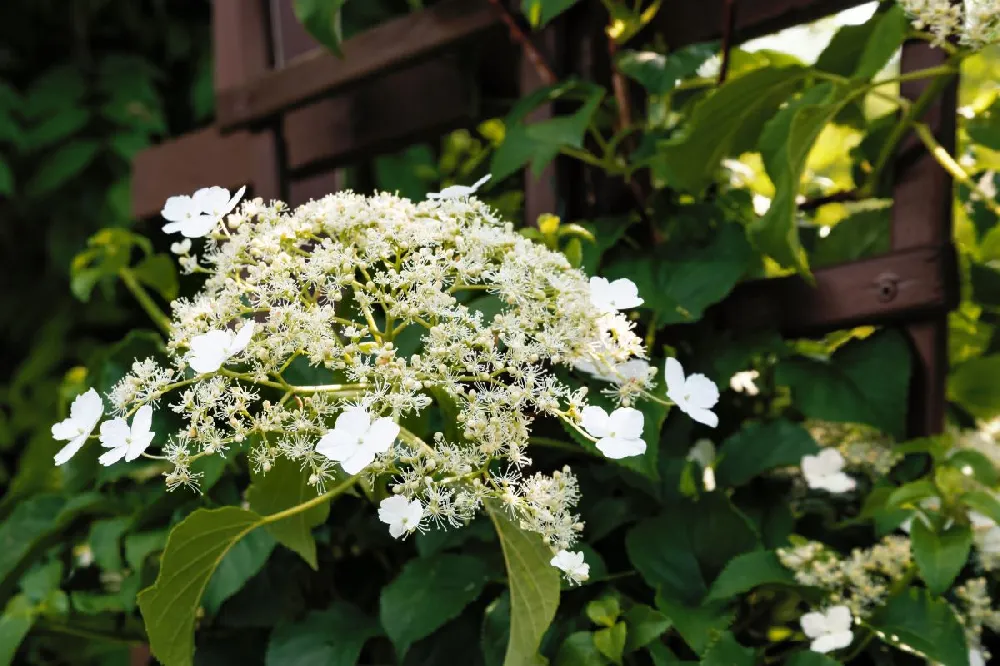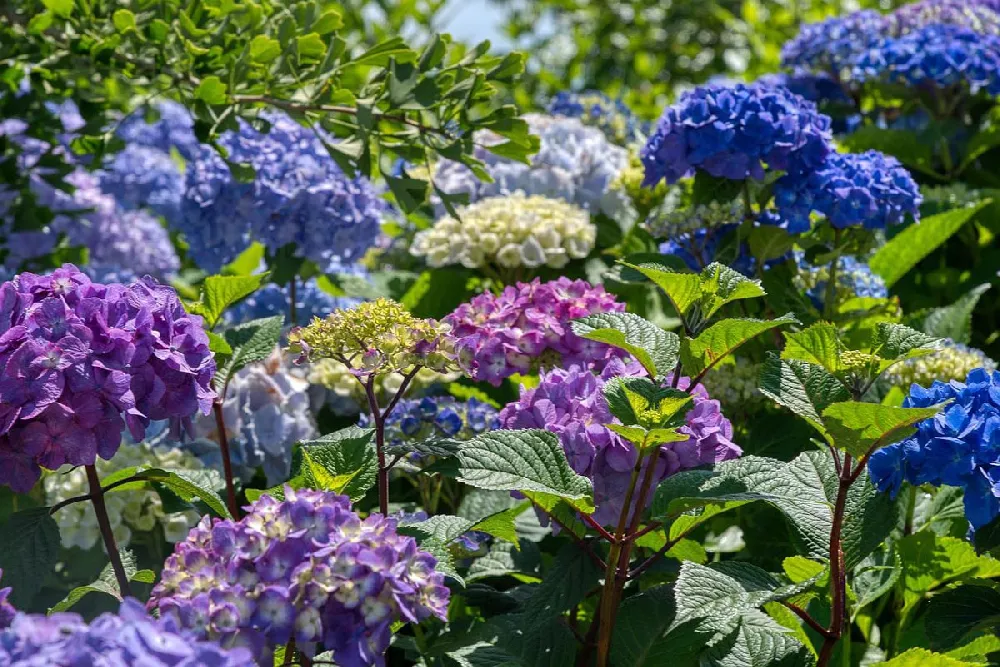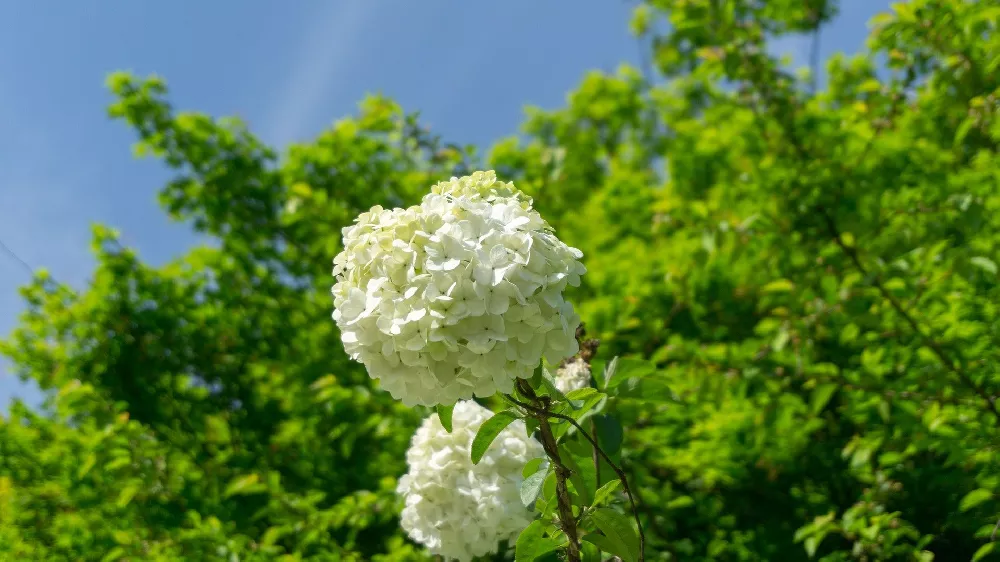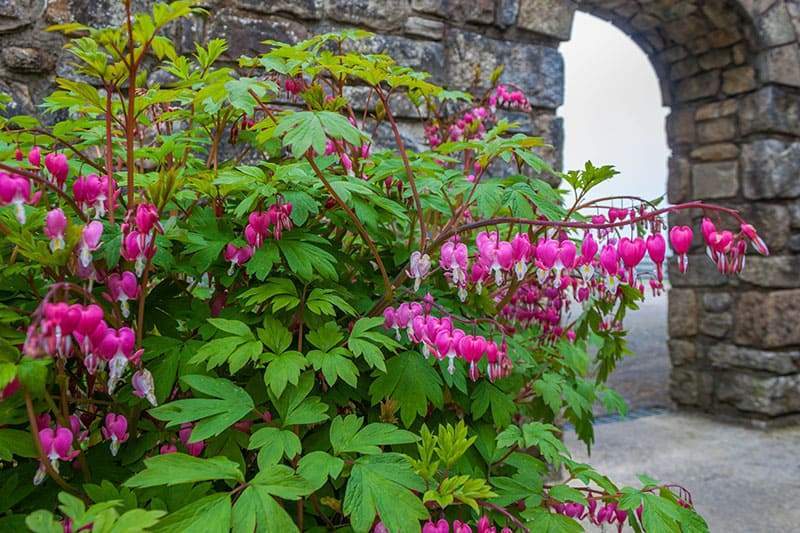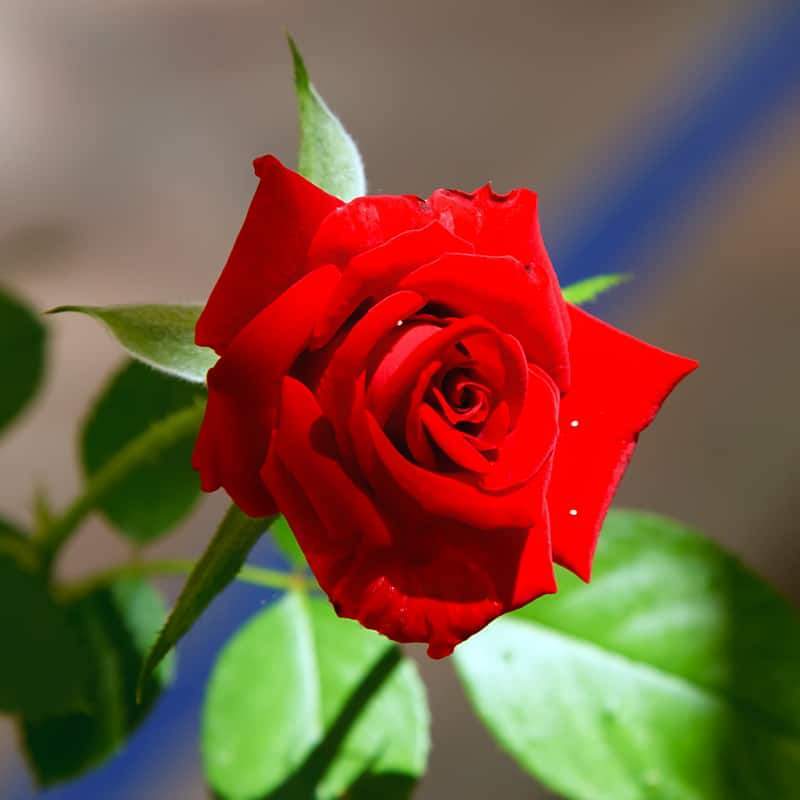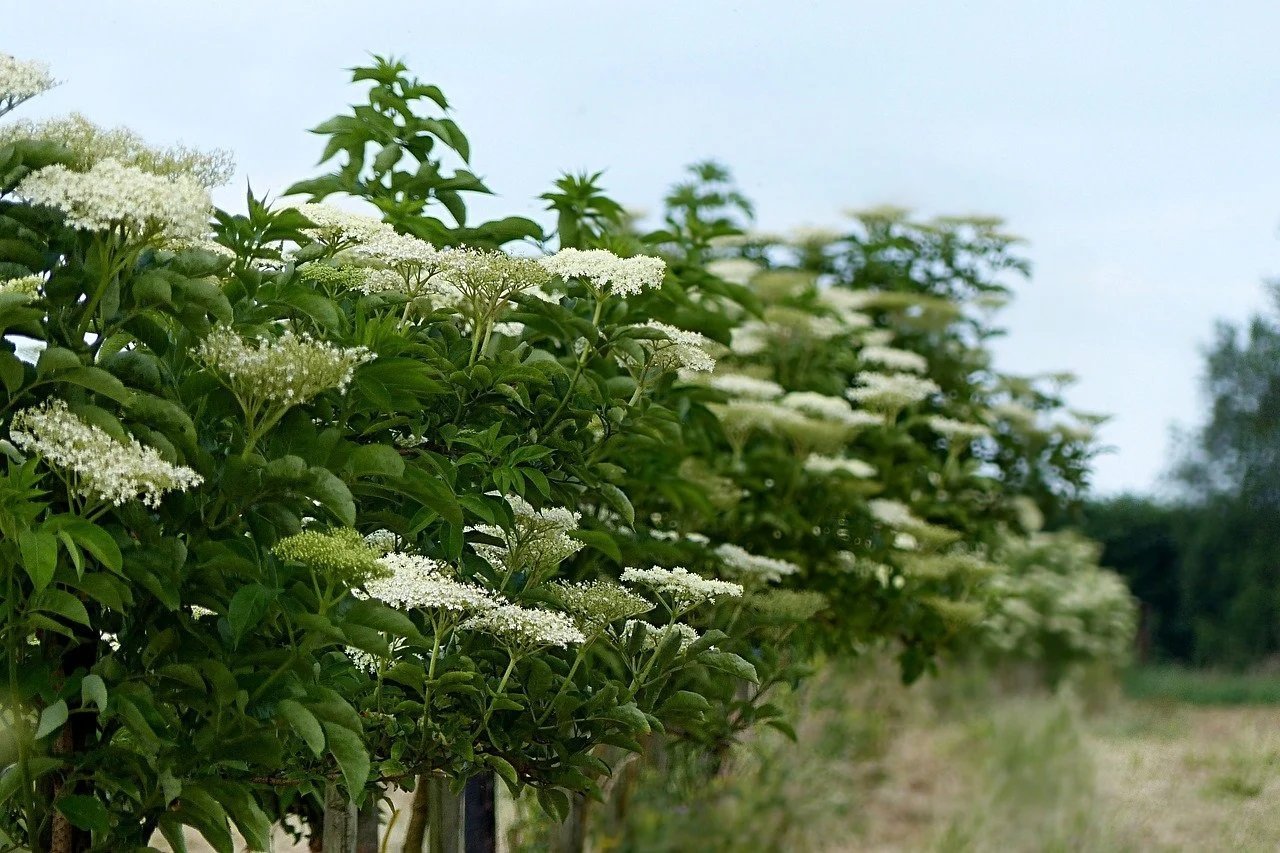- Home >
- Hydrangea Trees
Hydrangea Trees for Sale - Buying & Growing Guide
Filters
Price Range
Growing Zones
Plant Type
Flower Color
Sunlight
Mature Height
Plant Characteristics
22 Results
-
Growing Zone(s): 4-9$18.95
$41.95Save up to 54% -
Growing Zone(s): 5-9$37.95
$40.95Save up to 7% -
Best SellerGrowing Zone(s): 4-9$24.95
$49.95Save up to 50% -
Growing Zone(s): 4-9$43.95
$45.95Save up to 4% -
Growing Zone(s): 3-8$41.95
$56.95Save up to 26% -
Growing Zone(s): 3-8$129.95
$194.95Save up to 33% -
Growing Zone(s): 3-9$32.95
$38.95Save up to 15% -
Growing Zone(s): 3-9$95.95
-
Growing Zone(s): 6-9$19.95
$44.95Save up to 55% -
Growing Zone(s): 4-8$36.95
$37.95Save up to 2% -
Growing Zone(s): 4-8$64.95
$72.95Save up to 10% -
Sold OutGrowing Zone(s): 4-9$199.95
Hydrangea Trees – Buying & Growing Guide
Hydrangeas are commonly grown as shrubs, but with more than 600 varieties, they can grow as vines or like small trees. All of them produce beautiful flowers, and are commonly found in American gardens.
How to Grow Hydrangea Shrubs
How to plant hydrangea shrubs
Hydrangeas are planted best in early fall before the first frost, or in late spring after the last frost. Hydrangeas are woodland plants that like partial sun. A good spot to plant your hydrangea is in a location that gets morning sun, and dappled shade in the afternoon. Hydrangeas like well-drained soil that has a lot of organic material.
Dig a hole for your hydrangea that’s twice as wide as the root ball, and just as deep. Mix in a shovelful of leaf mold or well-rotted compost into the hole. Tease out the root ball until the roots hang loose. A tight root ball can kill the shrub. Place in the hole, and fill with compost enriched soil.
Lightly pack down the soil around the shrub, and water generously. Allow the water to seep in, and water again. Apply organic mulch such as bark chips around the bush, taking care they don’t touch the trunk of the plant.
How to achieve maximum results
Most gardeners grow hydrangea shrubs for their large bright flowers which range in color from blue to pink. You can change the color of your shrub’s flowers if you’re going for a specific look. If you want blue flowers, the soil needs to be acidic. This is achieved by watering your shrub every month with a solution of one quarter ounce aluminum sulfate per gallon of water. For pink flowers, add several handfuls of lime around the shrub, and water well.
How to Care for Hydrangea Shrubs
Watering and nutrients
Water every few days for the first few months after the hydrangea is planted.. Scale back on watering when you start to see robust growth. Your shrub needs about one inch of water each week during the growing season. When there’s little rainfall, you’ll need to water it.
Varieties of hydrangeas have different nutrient needs so use a balanced fertilizer designed for landscape plants. Bigleaf hydrangeas do best with three, light feedings spaced throughout the summer, in March, May, and June. Oakleaf and panicle hydrangeas need two applications in April, and June. Smooth hydrangeas are easy with one application in late winter/early spring.
Pollination
Some hybrid hydrangeas are sterile so they don’t have pollen. Others are bee magnets. Native, and wild hydrangeas are best for pollinators. Varieties that attract bees, beetles, and other insects include oakleaf hydrangea, silverleaf hydrangea, and smooth hydrangea.
Pruning
Hydrangeas don’t need annual pruning to thrive. You can trim them occasionally but note there are two different types of hydrangeas when it comes to pruning. Some bloom on old growth, and these should be pruned after they have flowered. Other varieties bloom on new growth, and are best pruned early in the spring before flower buds break out, or when dormant in late fall or winter.
Pests, diseases, and animals
Pests that bother hydrangeas include aphids, Japanese beetles, and spider mites. Use insecticides as needed, but consider employing biological deterrents. Ladybugs, for example, feast on both aphids and spider mites, and can be purchased online for release into your garden.
Hydrangeas are susceptible to several common plant diseases, including botrytis blight, cercospora leaf spot, and powdery mildew. All of these can be controlled using fungicide. It is important to space the hydrangeas so air can circulate. Clean up debris around the base of the plant, and prune infected branches when you see them.
Hydrangea Shrubs Varieties
Bigleaf Hydrangeas (Hydrangea macrophylla)
Origin: Japan
Flower colors: Pink, blue, white
Light: Partial shade
Water: Consistent moist soil
Height: 6 to 10 feet
Bigleaf Hydrangeas are also commonly known as French Hydrangeas and come in two different flower types, mophead and lacecap. The flower heads of mopheads are large and spherical, while lacecaps have small flat-headed flowers encompassed by bigger flowers. Many varieties of Bigleaf Hydrangeas have flowers, the colors of which can change depending on the condition of the soil.
If you purchase a flower in a pink or blue shade, you may find that it changes to the opposite color when planted in your garden. The element of the soil’s composition that can alter the flower color is the pH. If you find yourself with a flower color that you don’t want, you can make provisions to alter the pH of your soil by using fertilizers specifically for acidic loving plants, or with soil modifiers. The white varieties of Bigleaf Hydrangeas are unaffected by soil pH band will bloom in a creamy white irrelevant of soil composition.
This is a fairly low-maintenance type of Hydrangea, with very little pruning needed. You should deadhead spent flowers and trim the plant to keep it tidy, but other than that, pruning is not necessary. You can prune away dead wood as new growth appears in spring, but be careful not to mistakenly cut away any flower buds, as older varieties bloom on old wood. New varieties will flower on both the old and new growth.
Varieties of this type of Hydrangea include:
1. Pia
This is a dwarf variety of Bigleaf Hydrangea, growing only two or three feet tall. Its flowers bloom throughout July and August in vibrant pink. Unusually, the flowers of this plant remain pink even in soil conditions that would ordinarily turn Hydrangea flowers blue, so this is a good variety to choose if you’re a fan of the pink flowers and don’t want the risk of them turning blue.
This plant thrives in rich soil with plenty of organic matter. You can mix compost into your soil before planting it, or you can top dress your Hydrangeas soil with an organic mix. Keep the soil moist, ensuring good drainage to prevent the plant from having wet feet. Like all Bigleaf Hydrangeas, Pia enjoys partial to full shade. Position this plant in an area that ensures shade in the afternoon when the sun will be at its strongest. Morning sun will be tolerated by this plant, providing the soil is kept consistently moist.
2. Endless Summer
This cultivar is a medium-sized shrub, being on the more compact end of the scale if anything. In the right conditions, it will grow between three and five feet tall, and up to four feet wide. The name ‘Endless Summer’ is very fitting for this plant as it blooms all through spring and summer with a seemingly endless supply of flowers. Flowers will be blue or pink, depending on soil composition and will bloom in both new and old wood.
This plant enjoys a moist, well-draining soil, which can be top-dressed with mulch during colder winters to help insulate the soil and protect the roots. It can tolerate full sun when supplied with adequate moisture, but it will do better in partial to full shade.
Climbing Hydrangeas (Hydrangea petiolaris)
Origin: Asia
Flower colors: White
Light: Full sun to partial shade
Water: Maintain moist soil
Height: Typically between 30 and 60 feet long
Climbing Hydrangeas are also referred to as Japanese Hydrangeas and Creeping Hydrangeas. They grow well in full sun, partial shade, and even full shade, so they’re a great choice for many locations in a garden. As with most flowering plants, there will be a greater abundance of blooms if the Hydrangea is in a position of full sun, and shaded climbing Hydrangeas may suffer from a lack of flowers.
Be wary in hot climates, as these Hydrangeas prefer to be in some shade during intense heat, so a position that allows them protection from the sun during the heat of the afternoon would be ideal. They require well-draining soil to help prevent root rot and like to have consistently moist soil.
They require very little care in the first few years of life, as they begin as slow growers. Do not prune them during their first two or three years. Instead, allow them to establish themselves. Once established, the climbing Hydrangea can grow quite rapidly and will need some sturdy support to hold its weight. It can climb up a range of objects, including fences, pergolas, railings, and tree trunks. Once its phase of vigorous growth begins, you will need to prune it regularly to prevent it from becoming overgrown.
Pruning is recommended in summer after the plant has bloomed to avoid removing next year’s buds. Cut back lightly, removing any unhealthy or damaged branches. The Climbing Hydrangea doesn’t respond especially well to pruning, so if it does get out of control, then you’ll need to cut it back over a number of years gradually. Heavily pruning this plant risks it being unable to recover.
Varieties of this type of Hydrangea include:
3. Miranda
This climbing plant has oval-shaped leaves of around four inches long that come to a point at the base. It loses its leaves each winter, making it deciduous. The plant features a mixture of small and large white flowers; the small ones are fertile while the larger ones are not. As well as being beautiful, these flowers give off a very pleasant scent. They bloom from June through to August and tend to grow more slowly than other Hydrangeas. This plant is cold-hardy and can survive in temperatures as low as 5° F, making it suitable for many different climates.
Smooth Hydrangeas (Hydrangea arborescens)
Origin: Eastern North America
Flower colors: White, pink
Light: Partial shade
Water: Maintain moist soil
Height: 3 feet
The large and showy flowers are the main attraction of this type of Hydrangea. They typically start out as a pale green when they first bloom, then develop into a luscious creamy white color. Some cultivars of this Hydrangea have pink flowers, but they do not change color like some other types of Hydrangea.
Plant these Hydrangeas in slightly acidic soil if possible, as this will help them thrive. The soil must be well-draining as a preventative measure against root rot, as this is a thirsty plant, but it does not like to sit in soggy soil. It needs consistently moist soil, so be sure to water it freely, especially during dry spells in summer.
Though this plant can tolerate full sun, it prefers to be sheltered from it during hot afternoons, so a partially shaded spot would be ideal. You can prune this plant heavily in winter because the blooms appear on new growth, giving you no reason to keep old wood around. Cut the plant almost back to ground level in winter to encourage lots of new flowering growth next spring. You can also prune the plant in early spring before it begins it shows new growth.
Varieties of this type of Hydrangea include:
4. Incrediball
The name of this plant really says it all. The flowers bloom in stunning 10 to 14-inch globes, held up fast by sturdy stems to prevent drooping. These are the biggest flowers of any Hydrangea and are the jewel in the crown of many gardens. They look excellent as potted plants or lined up to create a striking hedge. This plant is also a brilliant choice for cut flowers thanks to its shield stopping blooms and unusually strong stems.
This plant is easy to care for and will bloom in abundance throughout summer, providing it gets 4-6 hours of sunlight each day, preferably in the morning. Plant it in a position of partial sunshine and partial shade, and this should be easily achieved. It can grow in full sun so long as you keep up with watering it quite heavily to maintain moist soil.
5. Annabelle
This is the most common Hydrangea sold in garden centers and seen in home gardens. It is popular thanks to its stunning white flowers in spheres of up to ten inches and its ability to keep blooming year on year even after harsh winters or drastic pruning. It is the ideal shrub to use for a showy hedge because it won’t respond badly to being tidied up with a heavy pruning in winter and will provide continuously pretty blooms every year without too much maintenance.
It tolerates cold well and is well-suited to climates in which temperatures drop too low to grow Bigleaf Hydrangeas. The main drawback of this variety is that the stems aren’t strong enough to hold the flowers in an upright position, and so you will notice the stems arching and the flowers appearing droopy if you don’t provide them with support. Some of the best ways to offer this are by fixing a short wire fence around the Hydrangea before new growth occurs, keeping the blooms off the ground. You can also plant your Hydrangea next to a fence for support or add stakes amongst the plant to support stems. Some people plant several Annabelle Hydrangeas together because as they mature, they will grow together and support each other.
Like other smooth Hydrangeas, this variety likes partial shade, particularly in the heat of the afternoon, but will require plenty of sun in order to produce plentiful flowers.
Mountain Hydrangeas (Hydrangea macrophylla ssp. serrata)
Origin: Japan
Flower colors: Pink or blue
Light: Full sun to partial shade
Water: Continuously moist
Height: 2 feet
Mountain Hydrangeas are a subspecies of Bigleaf Hydrangeas. They are typically more compact than Bigleaf Hydrangeas, with similar serrated deep green foliage. The leaves contain phyllodulcin, which is a natural sweetener, and are used to make tea in Asia. The ‘tea of heaven’ is consumed in Japan in celebration of Buddha’s birth. In Japan, the correct name for the tea is ‘amacha,’ while in Korea, they call it ‘sugukcha.’
The flowers of this plant will be pink or blue depending on soil composition. Acidic soil will result in blue flowers, while an alkaline soil will produce pink flowers. Due to their size, this plant makes a good low border around terraces or decked areas. It needs shelter from the wind, so planting it near the side of a house or close to a fence may be a good idea. It can grow in light anywhere from full sun to partial shade, requiring moist well-draining soil.
Varieties of this type of Hydrangea include:
6. Tuff Stuff
This deciduous shrub, as its name tells us, is hardy and dependable, with flowers blooming year upon year even after harsh winters. If your Bigleaf Hydrangeas have struggled to flower due to the climate or particularly tough winters, this is a good alternative Hydrangea. It can grow two or three feet tall and spreads to a similar width.
It requires continuously moist soil but is susceptible to root rot, so ensure that soil is well draining. You can add sand to your soil mix to help with this, while a layer of mulch on the top will help to retain moisture. In order to produce plentiful blooms, try to ensure this plant receives six hours of sun a day. It can tolerate a position of full sun, but you must take extra care to make sure that the soil isn’t allowed to dry out.
Oak leaf Hydrangeas (Hydrangea quercifolia)
Origin: United States
Flower colors: White, pale pink
Light: Full sun to partial shade
Water: Requires less water than other Hydrangeas
Height: 6 to 8 feet
This type of Hydrangea is much more tolerant of dry conditions than the others. It can survive with significantly less water and will tolerate poorer soils than its relatives. However, it will not tolerate wet feet, and it is essential that any soil where Mountain Hydrangeas are growing is well-draining. Even in short periods of soggy soil, this plant will develop root rot, so be wary of overwatering.
This type of Hydrangea is interesting in that it goes through various changing phases along with the seasons. During summer, like other Hydrangeas, it provides beautiful blooms. It is available in both single-flower form and double-flower form, where petals appear to be layered.
In the fall, the oak leaf-shaped foliage from which this type of Hydrangea gets its common name turn to shades of brilliant orange, yellow and red. If the leaves of your Oakleaf Hydrangea struggles to change color, it will be down to a lack of sunlight. This plant likes to have morning sun with afternoon shade, or dappled shade throughout the day.
Varieties of this type of Hydrangea include:
7. Snowflake
This variety of Hydrangea features clusters of flowers known as multiple florets, which give the look of double blooms. This results in a much longer flowering period for this plant, providing blooms through spring, summer, and right through to autumn. The flowers will be white in the summer, fading to a pale pink towards the end of the flowering season. It can grow to eight feet in height, reaching full growth at around five years. Like other Oakleaf Hydrangeas, this plant is easily susceptible to root rot, so ensuring it grows in well-draining soil is of utmost importance. This is probably the best thing you can do in terms of care to ensure your plant thrives.
8. Snow Queen
Snowflake Hydrangea looks just like the Snowflake Hydragea; so it can be recognized for its single creamy bloom. Another distinct characteristics is its blossoms often stay upright do not extend much. This variety can reach 4 – 6 feet in height and can spread up to 8 feet. It is a widely known type of Hydrangea, having won the Award of Garden Merit of the Royal Horticultural Society and Gold Medal Award of the Pennsylvania Horticultural Society
Panicle Hydrangeas (Hydrangea paniculata)
Origin: China, Korea, Japan, Russia
Flower colors: White, pink, green
Light: Full sun to partial shade
Water: Maintain moist soil
Height: 8-15 feet
These Hydrangeas get their name from their flowers, which grow in clusters to form a cone or panicle shape. They have many wonderful benefits, including their ability to recover from drastic pruning. It is this trait that allows the plant to be pruned into a tree shape, which is not possible with any other type of Hydrangea. They can be pruned at any time of year, with the exception of during the summer when the flowers are just about to bloom.
Another benefit is its ability to survive in a wide range of climates, being hardy against both cold and hot temperatures. If you struggle to grow other types of Hydrangea due to harsh winters or a lack of shade in the summer heat, this would be a more suitable Hydrangea to grow. The flowers on Panicle Hydrangeas typically start off green, changing to white, then fading to pink.
Varieties of this type of Hydrangea include:
9. Little Lamb
This compact shrub differs from other Hydrangeas in that its flowers are dainty and delicate. They are popularly used for cut flowers or dried flower arrangements. Unlike most Hydrangeas, this variety is drought tolerant, making it ideal for forgetful gardeners or those who like low-maintenance plants. It is also less fussy regarding its soil type than most other Hydrangeas. Though it would prefer well-draining soil, it can survive in most soil conditions and requires less moisture than you would typically expect of a Hydrangea. It reliably blooms every year even after harsh winters, with flowers that appear white and then, transform to pink in the fall.
10. Limelight
This variety of Panicle Hydrangea can be appreciated in gardens right across the United States, as it is very tolerant of a range of climates, including both harsh winters and hot summers. The large flowers bloom in clusters spanning up to twelve inches on sturdy stems that hold the blooms in an upright position. The flowers initially appear in a refreshing lime green shade, transforming to white and then, soft pink. The flowers on this plant have an exceptionally long blooming period, most likely outlasting other flowers in your garden. As the flowers reach fall and have aged, they move on from pink to a red and then, deep burgundy color.
This plant requires well-draining soil, and though it likes moisture, it does not like to be sat in soggy soil. It needs to get around six hours of sun a day, though it would prefer to be in a shaded area during afternoons in hot climates. In cooler climates, full sun is preferable.
Sources:

